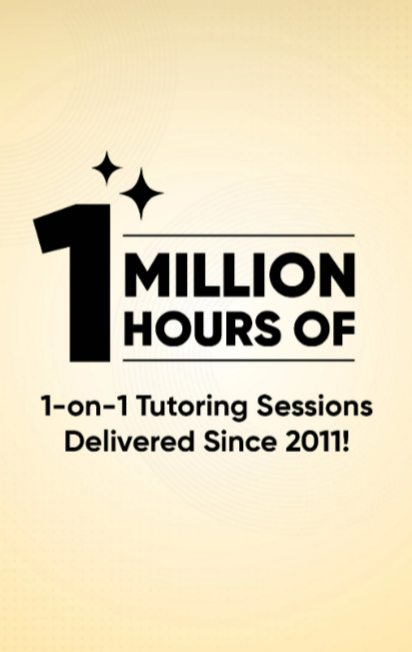Middle School Math Practice at Home: What Really Works?
Middle school is a turning point in every student’s math journey. The curriculum gets more complex, covering topics like ratios, integers, algebra, and geometry. It’s not unusual for students to feel overwhelmed or frustrated. As a parent or guardian, you might wonder: How can I help my child practice math effectively at home—without turning it into a battle?

The good news is, effective middle school math practice at home doesn’t require expensive software or fancy tools. What it really needs is consistency, structure, and the right strategies. This article breaks down what actually works—and how you can support your child’s progress whether or not you're using middle school math tutoring online.
Why Math Practice Matters More in Middle School
During middle school, students begin transitioning from concrete number operations to more abstract mathematical thinking. Topics like negative numbers, proportional relationships, and pre-algebra require a deeper level of understanding.
Without regular practice, students may:
- Lose confidence in math
- Develop gaps that carry over into high school
- Start to view math as something they “just aren’t good at”
But with the right practice routine, students can build lasting confidence and fluency that sets them up for success—not just in math, but across other subjects too.
Common Mistakes to Avoid in Math Practice
- Random Worksheets: Grabbing a worksheet online might feel productive, but if it’s not aligned with your child’s current level or classroom material, it can lead to frustration or confusion.
- Over-reliance on Memorization: While math facts matter, middle school math is about understanding patterns and applying logic. Memorizing steps without grasping the "why" can backfire.
- Sporadic Practice: One long session a week isn’t as helpful as 10–15 minutes daily. Like learning a language, math fluency grows with frequency.
What Really Works for Middle School Math Practice at Home
-
Set a Consistent Schedule (and Keep It Light)
A predictable routine is essential. Math practice should be short and focused:
- 3–4 sessions per week
- 15–20 minutes each
- Same time each day (e.g., after school, before dinner)
The key is making math feel like a natural part of the day—not a punishment or a panic-driven last-minute effort before tests.
-
Let Your Child Teach You
One of the most powerful ways to reinforce learning is by teaching. After a practice session, ask your child to explain how they solved a problem. Let them talk you through the steps—even if they’re unsure.
Benefits:
- Reinforces understanding
- Encourages verbal processing
- Builds confidence
-
Practice in Small Batches by Concept
Don’t throw everything at your child at once. Break topics into manageable chunks:
- Monday: Practice multiplying fractions
- Wednesday: Focus on solving 1-step equations
- Friday: Tackle geometry vocabulary
Use a simple tracker or checklist to mark progress by topic. This approach builds mastery instead of confusion.
-
Use Real-Life Scenarios to Make Math Meaningful
Middle schoolers often ask: “When will I ever use this?” You can bring math to life with everyday examples:
- Cooking: Double or halve recipes using fractions
- Shopping: Calculate discounts and taxes
- Travel: Work with distances, time, and speed
-
Mix Digital with Pencil-and-Paper
While many online platforms are helpful, don’t forget the value of writing things out. Encourage your child to:
- Solve problems on paper
- Show all steps (even with calculator use)
- Use graph paper for geometry or equations
-
Review Mistakes Without Judgment
Mistakes are gold in math practice—if handled well. Instead of just correcting errors, take time to explore:
- What went wrong?
- Was it a calculation mistake or a misunderstanding?
- How would you approach it differently next time?
This builds resilience and encourages a growth mindset—skills that help students far beyond math.
-
Set Progress Goals (Not Just Scores)
Instead of only focusing on grades or how many questions were “right,” set goals like:
- "I want to understand how to solve equations with variables on both sides"
- "I’ll practice word problems twice this week"
- "I’ll explain what I learned to someone else"
This shifts focus from performance to learning—which makes math less intimidating and more rewarding.
Practice and Tutoring: A Powerful Combination
While self-led practice at home can go a long way, combining it with middle school math tutoring online adds personalized guidance that can accelerate results. Here’s how the two complement each other:
| At-Home Practice | Online Tutoring |
|---|---|
| Builds fluency | Fills knowledge gaps |
| Reinforces school material | Offers concept clarification |
| Develops independence | Adds structure and accountability |
Supporting your middle schooler in math doesn’t mean you need to be a math expert yourself. What they need most is your consistency, encouragement, and a smart approach to practice.
By creating a balanced, low-pressure routine and celebrating progress (not perfection), you help build a foundation that will support them for years to come. And if you ever feel that extra help is needed, combining your home efforts with middle school math tutoring online can make the journey smoother for everyone involved.
Want to know more? Book a free demo today to know how we do it at Jaya's Academy.
 United States
United States United Kingdom
United Kingdom Australia
Australia Canada
Canada Middle East
Middle East Europe
Europe